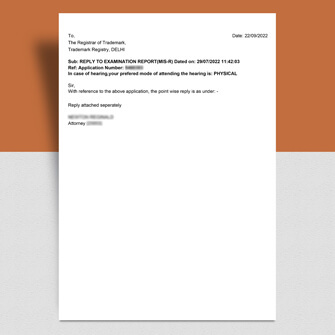Trademark Objection: Addressing Common Issues
When applying for trademark registration, it's common for the Trademark Office to raise objections based on various factors. Let's explore some key reasons behind trademark objections and how to address them.
1. Incorrect Trademark Form:
- Objection: If the application is not on the proper form, an objection is raised.
- Corrective Action: Request correction using form TM-16.
2. Incorrect Trademark Applicant Name:
- Objection: If the applicant's name is incorrect, an objection is raised.
- Corrective Action: Correct the name via form TM-16.
3. Failure to File Trademark Form TM-48:
- Objection: If Form TM-48 is missing or incorrectly executed.
- Corrective Action: Attach a duly stamped Power of Attorney via form TM-16.
4. Incorrect Address on Trademark Application:
- Objection: If the applicant's address is missing or inaccurate.
- Corrective Action: Update the address using form TM-16.
5. Vague Specification of Goods or Services:
- Objection: Raised if the specification is too broad.
- Corrective Action: Provide specific items via form TM-16.
6. Same or Similar Trademark Exists:
- Objection: If identical or similar marks exist for similar goods or services.
- Corrective Action: Clarify differences in a reply to the examination report.
7. Trademark Lacks Distinctive Character:
- Objection: Non-distinguishing marks face objection.
- Corrective Action: Submit proof of distinctive character through prior use.
8. Deceptive Trademark:
- Objection: If the mark can deceive the public.
- Corrective Action: Exclude deceptive elements via Form TM-16.
Additional Insights:
- Online Trademark Search: Conduct a thorough search before applying.
- Trademark Class: Understand the classification of goods/services.
- Trademark Opposition: Familiarize yourself with the opposition process.
- Protection Categories: Differentiate between trademark, patent, and copyright.
Remember, addressing objections promptly and accurately enhances the chances of successful trademark registration.
